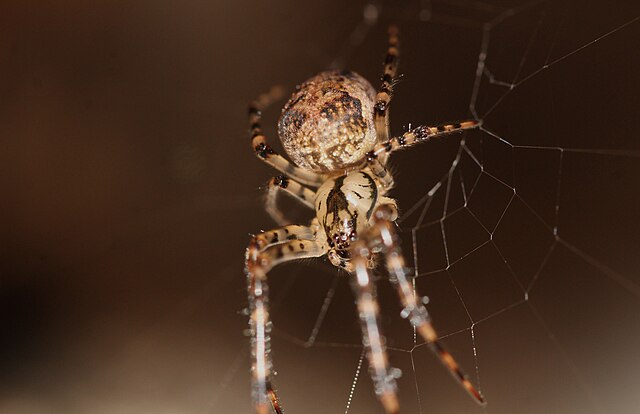Newly discovered fungus species manipulates cave spiders
The newly discovered fungus Gibellula attenboroughii infects cave spiders and forces them to help spread its spores, Harry Evans and colleagues report.
Animals that are infected with parasites may behave like zombies. The parasite manipulates their behaviour so that they cooperate to their own demise, to the benefit of the parasite. The ability of parasites to do this is amazing; it shows that they are able to control their host’s nervous system. There are multiple examples, as you will see in the category manipulation; they are gruesome tales.
Also some parasitic fungi do it. Gibellula attenboroughii, named for the renowned wildlife documentary filmmaker David Attenborough, is a newly found parasitic fungus that lives in spiders. Harry Evans and colleagues describe this species.
The researchers discovered the fungus Gibellula attenboroughii in an abandoned gunpowder store in Ireland, growing on the orb-weaving cave spider Metellina merianae. This European spider lives in caves, hollows, and cellars, where it hides near its web. But a fungal infected spider, it turns out, leaves its safe place and settles on the ceiling or wall near the entrance, where air circulates. It becomes covered with fungal mass and special spore-bearing fungal threads and dies. Air currents take up the fungal spores and disperse them.
Spore dispenser
The fungus has thus transformed the spider into a spore disperser. We already knew this type of manipulation. Notorious are fungal species of the genus Ophiocordyceps that infect carpenter ants (of the genus Camponotus). A sick ant is often forced to leave the nest, make its way onto the vegetation next to an ant trail, and bite down; the jaws lock, and the ant dies. A kind of mushroom grows out of its body, producing fungal spores. The dead ant’s location is favourable for spreading to new victims.
Fungi are known that infect spiders and turn them into a spore dispenser in a similar way. The recently discovered fungus species Gibellula attenboroughii is specific to cave spiders. It is remarkable that a pathogen can spread among these spiders, which live isolated, in contrast to ants. Besides the orb-weaving cave spider, the fungus also infects the European cave spider, Meta menardi, a larger species.
Willy van Strien
Photo: Orb-weaving cave spider Metellina merianae. -serwacy01- (Wikimedia Commons, Creative Commons CC BY-SA 4.0)
See also: cicadas that are manipulated by a fungus
Sources:
Evans, H.C., T. Fogg, A.G. Buddie, Y.T. Yeap & J.P.M. Araújo, 2025. The araneopathogenic genus Gibellula (Cordycipitaceae: Hypocreales) in the British Isles, including a new zombie species on orb-weaving cave spiders (Metainae: Tetragnathidae). Fungal Systematics and Evolution 15: 153–178. Doi: 10.3114/fuse.2025.15.07
Hughes, D.P., J.P.M. Araújo, R.G. Loreto, L. Quevillon, C. de Bekker & H.C. Evans, 2016. Chapter eleven. From so simple a beginning: the evolution of behavioral manipulation by fungi. Advances in Genetics 94: 437-469. Doi: 10.1016/bs.adgen.2016.01.004
